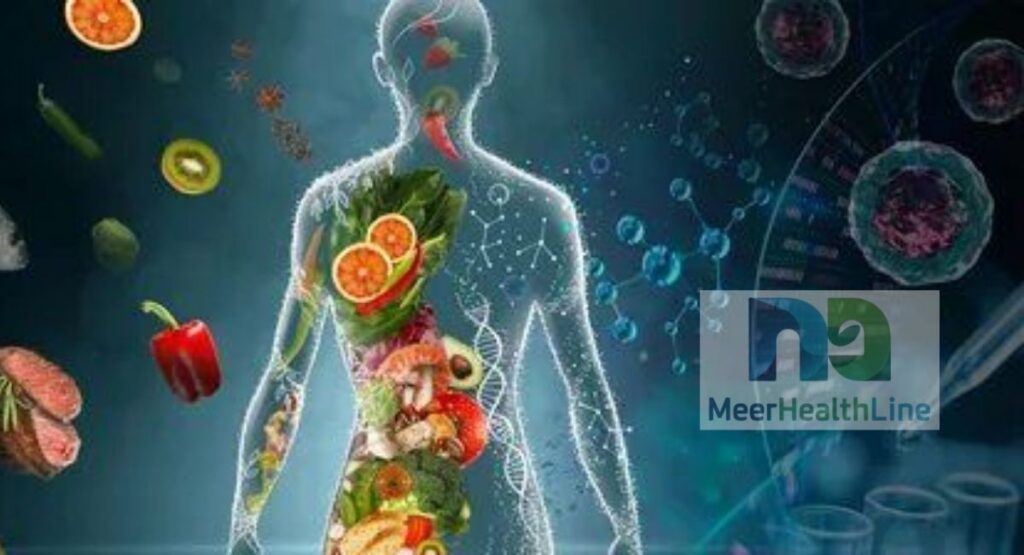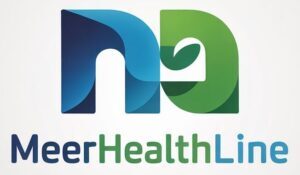Introduction:
Everybody wants to eat healthier, but there is a lot of contradicting information on the Internet, and it is not hard to lose yourself. Carbs are the enemy, the following day the required. There are diets that promote fats, and there are those that demonize them. Such a confusion not only leads to unhealthy eating habits but also introduces such feelings as frustration, eating irritation and health complications.
According to Centers for Disease Control and Prevention (CDC), poor nutrition causes chronic disease such as type 2 diabetes, heart disease and certain types of cancer. We cannot merely go by what is trending to make sound decisions but also comment on the science behind nutrition.This blog will discuss the biological processes, evidence-based dieting patterns and effective means that are the basis of a healthy diet.

1.How Does a Healthy Diet Look Like? – A Scientist’s Point of view
What is A Healthy Diet?
A balanced diet will include adequate proportions of all the needed nutrients to:
- Boost energy
- Support immune function
- Promote cellular repair
- Avert chronic illnesses
According to the recommendations of World Health Organization (WHO) and Harvard school of public health, a healthy diet should include the following:
| Nutrient | Function | Key Sources |
| Carbohydrates | Primary energy source | Whole grains, fruits, legumes |
| Proteins | Tissue repair, muscle building | Eggs, fish, legumes, nuts |
| Fats | Hormonal health, brain support | Avocados, olive oil, fatty fish |
| Vitamins & Minerals | Metabolism, immunity | Leafy greens, berries, seeds |
| Water | Digestion, detox, cell health | Plain water, fruits, soups |
Balanced diets are also based on caloric needs, age, activity level and other underlying medical conditions.

2. The Scientific Evidence on How Nutrition Affects the Body
Every food you eat acts like a biochemical message to your body. Nutrients directly affect your:
Cellular Function
- The carbohydrates are converted into fuel, glucose, to synthesize ATP (energy) via mitochondria..
- Protein Reconstitutes muscles and enzymes.
- Fat such as DHA aids the construction of brain neurons.
Hormonal Balance
- Omega-3 fatty acids reduce stress hormone (cortisol) level.
- High-sugary food elevates insulin levels that faster fatness and desire.
Gene Expression
- Nutrigenomics has shown us that certain foods have the ability to turn genes on or off with regards to inflammation and longevity.
- e.g., sulforaphane (content of broccoli) call the antioxidant gene on track.
In a groundbreaking study published in The Lancet (2019), researchers reported 11 million global deaths to be linked with poor diet (mainly through insufficient consumption of fruits, vegetables, and whole grains).

3. How Gut Health Fits in a Healthy Diet
More than 100 trillion of microorganisms are found in your gut.
These microbes:
- Ferment fiber, and produce short chain fatty acids (SCFAs) like butyrate, anti-inflammatory.
- Confuse neurotransmitter f which can be serotonin, mood and sleeps.
- Eliminate or enhance protective tuning of intestine wall and immune.
Gut Micro biome- Supporting Foods:
- Prebiotics: prebiotics (good bacteria eat garlic, onions, oats, bananas)
- Probiotics: yogurt, kefir, cabbage and sauerkraut (addive good bacteria)
- Polyphenols: Green tea, berries dark chocolate (preserve flora in bowel)
IBS, obesity and depression are associated with alteration of the gut microbiota (dysbiosis). A fiber and plant diverse diet forms the foundation of gut and overall well-being.

4. Stereotypes Vs.. Realities of Science
❌ Mistake 1: Gov Internal Prescription Carbohydrate.
Fact: Carbs are required to fuel the brain and muscles. What goes up is the insulin levels thus leading to fat storage; this sugary white stuff such as the white bread, pastries.
Myth 2: Bad Fats Truth: Unsaturated fats
facts: The body needs unsaturated fats to manufacture hormones and healthy cells. Studies show that diets high in omega-3 reduce chances of cardiovascular diseases.
Myth 3: Diets rich in protein are harmful to Kidney
Fact: Moderate to high protein intake seems not to damage kidneys in healthy individuals.It is one of the myths that are frequently used with errors based on clinical experience.
Science Tip: When investigating diet claims always seek peer-reviewed research. Fad diets do not take into this consideration long-term effects and scientific proof.

5. Working Patterns of Evidence-Based Diets
All diets are not equal. Others have decades of clinical evidence to support them:
- Mediterranean Diet
Contains a lot of olive oil, fish, legumes, whole grains, fruit.
• Shown to lower the risk of heart disease, Alzheimer disease and inflammation.
• New England Journal of Medicine, 2013
- DASH Diet (Dietary approaches to stop hypertension)
- Emphasizes vegetables, fruits, high protein in restrained portions, low-sodium items.
- Lowers blood pressure, and LDL cholesterol.
- Source: National Heart Lung and Blood Institute Vegetarian Diets
- Emphasizes eating plant
- Whole foods and limiting or avoiding animal foods.
- Accompanied by lowered risks of cancer and diabetes.
- Provides a sustainability gain in environmental aspects.
Such diets are concerned with nutrient density, low glycemic load, and anti-inflammatory food.
6. Evidence-Based Approaches to Developing a Healthy Diet
The following are the effective ways of improving the healthiness of your diet:
Strategy 1: Go by the Whole Food First Stunt
- Select foods with few modifications and free of sweeteners.
- Illustrations: trade white rice with quinoa, sweets cereal with oatmeal.
Strategy 2: Adhere to the Harvard Healthy Plate model
- Half plate: vegetables and fruits
- One-quarter: whole grains
- One-quarter: healthy protein
- Healthy fat (drizzle of olive oil) and green tea/water to drink
Strategy 3- Eat Mindfully
- Do not be distracted during meals.
- Eat slowly and watch the feeling of fullness.
- Mediates digestion and helps avoid overeating.
Strategy 4: Reduce sugars and processed food
- AHA prescribes <25g added sugar/ day in females, and <36g in males.
- Check nutrition labels: sugar masquerades as maltose and corn syrup or fruit concentrate.
7. Tricks to begin to use Science in Daily Diet
These strategies are not so big that you feel pressured to implement them. Try:
- ✅ Sunday meal Prepping: Less bad decisions in the middle of the week.
- ✅ Reading Nutrition Facts: seek out foods with high fiber, low sugar and low number of ingredients.
- ✅ Monitoring Food Sensitivities: Pay attention to your body after eating some meals.
- ✅ Morning Hydration: Tones up the digestion and improves brain function.
In the long term, the set of habits translate to quantifiable increases in energy levels, concentration, and digestive health, as well as good mood.
Fiber-Rich Foods: The Secret to a Healthy Future What Is Fiber?
Dietary fiber is the part of plant foods which you do not digest, which comes through your digestive system relatively unchanged. While it may not impart calories or nutrients directly like other food sources, it is vital in your health- particularly in terms of digestion, cardiovascular health, blood sugar, as well as gut microbiome diversity.
There are two broad categories of fiber:
| Type | Description | Health Benefit | Sources |
| Soluble Fiber | Dissolves in water to form a gel-like substance | Lowers cholesterol & blood sugar | Oats, apples, beans, flaxseeds |
| Insoluble Fiber | Does not dissolve in water | Adds bulk, promotes regular bowel movements | Whole grains, bran, vegetables, nuts |
1.Medically Speaking, the Great Things about Fiber-Rich Foods
- Digestive health
Insoluble fiber gives bulk and improves the passage of stool in the bowel, and hence helps to clear constipation. Soluble fiber supports the growth of the good microorganisms in the bowel, which utilize soluble fiber to produce short-chain fatty acids (SCFAs), which are health promoting reducing inflammation and producing colon health.
Prevention of Heart
Disease Diets that contain abundant amounts of soluble fiber (10-25g / day) are reported to lessen LDL (“bad”) cholesterol levels and decrease the likelihood of heart disease; this follows the American Heart Association.
- Blood Sugar Control
Fiber reduces the rate at which the sugar is absorbed, avoiding sugar spikes in blood. This will benefit especially those with type 2 diabetes or insulin resistance.
- Weight Management
High-fiber foods make people more satiated and eat less in general. As one research published in Annals of Internal Medicine reported, adding more fiber to a diet contributed to weight loss in people, without any other change in their dietary habits.
5.Slower-onset
Likely to contract Some cancers Whole grain fiber has been linked with lower rates of colrectal cancer in several mega initiatives
2.Top 20 High-Fiber Foods to Add to a Diet
Some of the mixes of soluble and insoluble-fiber foods include:
Whole Grains
Food Fiber (cooked/cup)
| Oats | 4 g |
| Quinoa | 5 g |
| Brown rice | 3.5 g |
| Whole wheat pasta | 6 g |
| Barley | 6 g |
Legumes (Excellent Source of Soluble Fiber)
| Food | Fiber (per cooked cup) |
| Lentils | 15.6 g |
| Black beans | 15 g |
| Chickpeas | 12.5 g |
| Kidney beans | 13.1 g |
| Split peas | 16.3 g |
Vegetables
| Food | Fiber (per cup, cooked) |
| Broccoli | 5.1 g |
| Brussels sprouts | 4 g |
| Carrots | 3.6 g |
| Sweet potatoes (with skin) | 4.8 g |
| Artichokes | 6.8 g |
Fruits
| Food | Fiber (per medium) |
| Apple (with skin) | 4.4 g |
| Pear (with skin) | 5.5 g |
| Banana | 3.1 g |
| Avocado (half) | 6.7 g |
| Berries (1 cup) | 7–8 g |
Nuts & Seeds
| Food | Fiber (per ounce) |
| Chia seeds | 10 g |
| Flaxseeds | 7.6 g |
| Almonds | 3.5 g |
| Pistachios | 2.9 g |
| Sunflower seeds | 3.1 g |
3.Tips to Increase Fiber (Without upset)
1. Take it in small steps: Raising the amount of fiber too fast is likely to make you feel bloated or gassed. Incrementally take in a 7 10 day.
2. Hydrate: Fiber thrives on water; in the absence of enough fluids, it might result into constipation.
3. Varity of fiber: Use both soluble and insoluble fiber to gain the most.
4.Use swaps:
- White rice → Brown rice or quinoa
- Fruit juice → Whole fruit
- Potato chips → Air-popped popcorn
- Crackers → Carrot or cucumber sticks with hummus
Conclusion
The healthy diet science is explicit and practical. Eating nutrient-rich whole foods, learning to listen to your body and applying evidence based techniques may propel you along a journey toward maintaining your long lasting health. Don’t follow a trend – rely on the evidence. Eat, feel better and live longer by using science as a guide on how to eat smarter.
Meta Description
Immergets yourself into the science behind nutrition during meals Discover evidence-based nutrition principles, ideas on gut health and tips to design a healthy diet.

Welcome to Meer Health line. I am Muhammad Naeem, an AI-Povered SEO, and Content writer with 4 years of experience.
I help website rank higher, grow traffic, and look amazing. My goal is to make SEO and web design simple and effective for everyone.
Let’s achieve more together!

